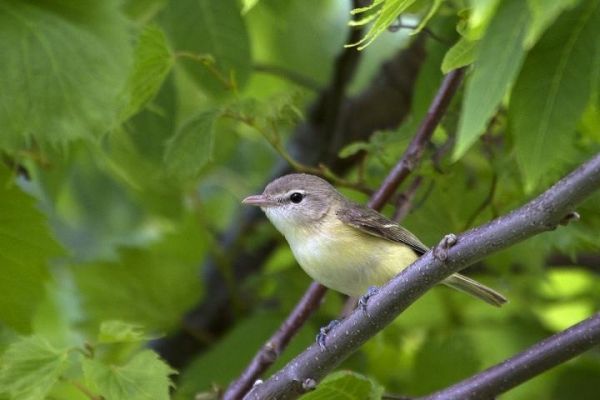Land conservation programs that have converted tens of thousands of acres of agricultural land in Illinois back to a more natural state appear to have helped some rare birds increase their populations to historic levels, a new study finds. Other bird species with wider geographic ranges have not fared as well, however.
The research, reported in the journal Ecosphere, finds that one of the four species studied, the Bell’s vireo (Vireo bellii bellii), has bounced back from historic declines to more than double its last estimated abundance in Illinois.
“This increase surpasses state goals set for the bird in 2004, and speaks to some of the successes of the Conservation Reserve Enhancement Program, a national effort begun in 1996 to improve water quality, reduce erosion and restore lands and wildlife once lost to agricultural expansion,” said Illinois Natural History Survey avian ecologist Bryan Reiley, who led the study. “Other rare birds – particularly those most reliant on early succession grasslands – are still struggling, however.”
Read more at University of Illinois at Urbana-Champaign
Image: The Conservation Reserve Enhancement Program appears to have benefited the Bell's vireo in Illinois. (Credit: Photo by Michael Jeffords and Sue Post)


